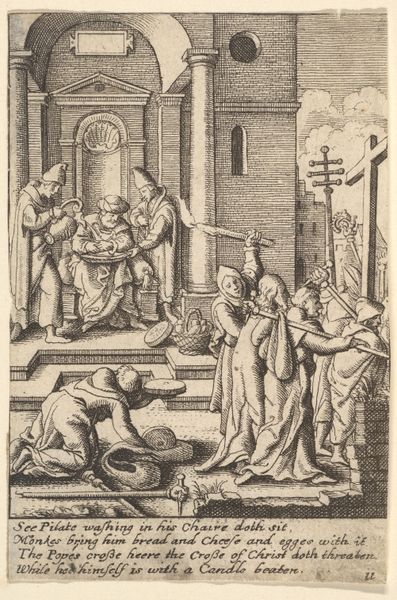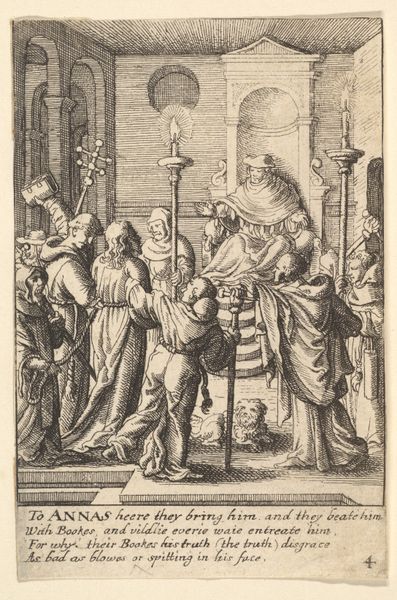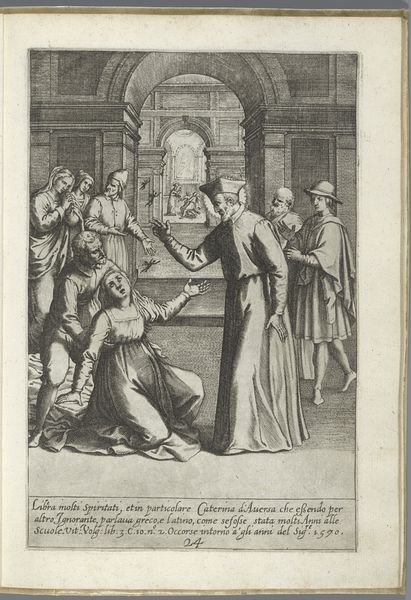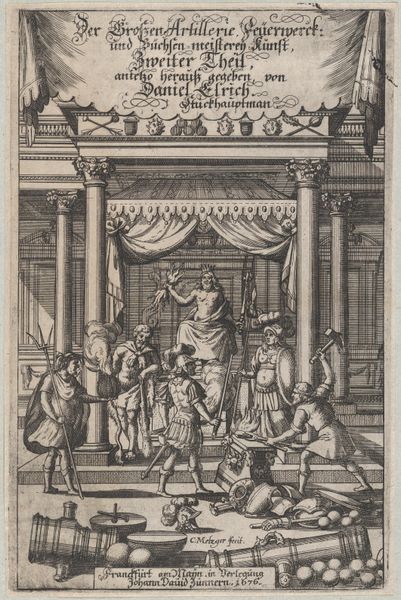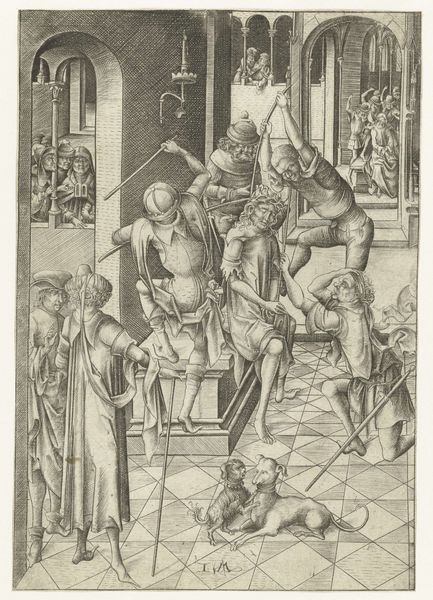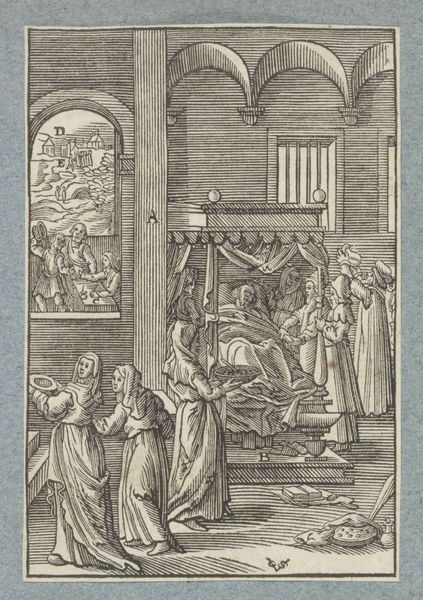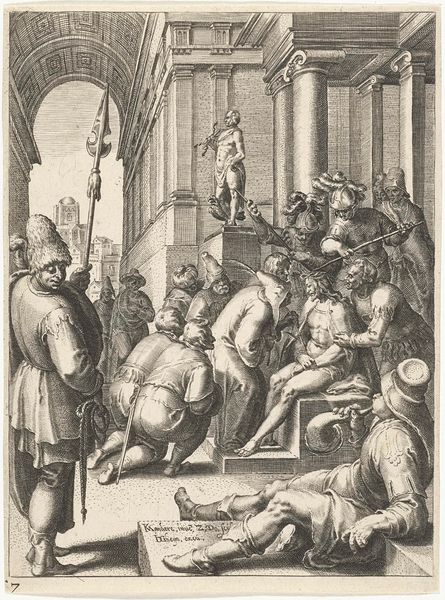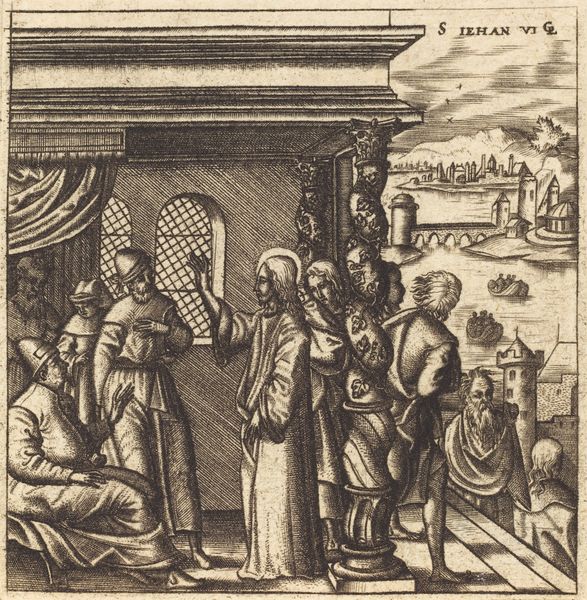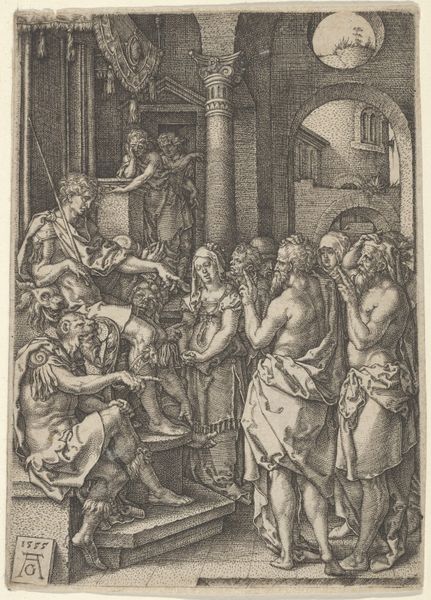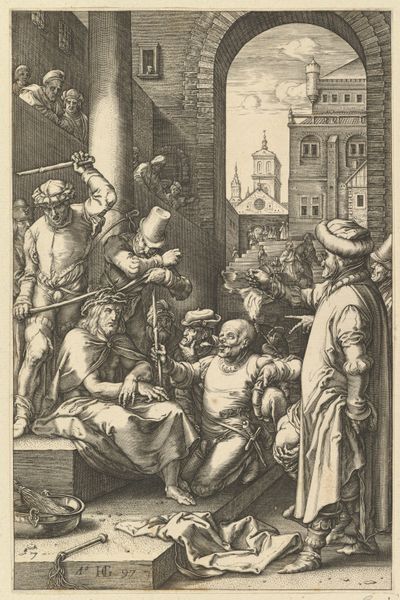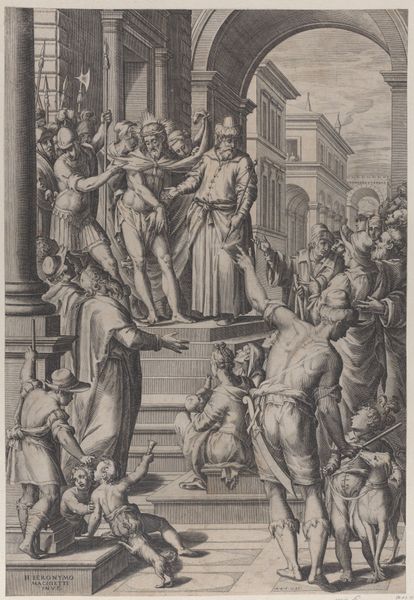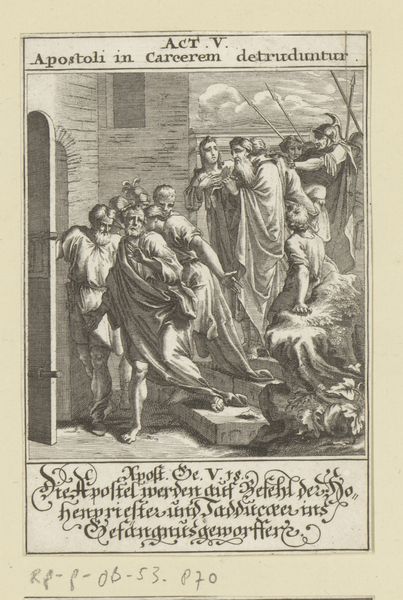
drawing, print, etching, engraving
#
drawing
#
baroque
# print
#
etching
#
figuration
#
history-painting
#
engraving
Dimensions: Sheet: 3 7/16 × 2 3/8 in. (8.8 × 6 cm)
Copyright: Public Domain
Curator: This is "The Scourging," an etching and engraving by Wenceslaus Hollar, made between 1644 and 1652. It’s currently part of the collection at the Metropolitan Museum of Art. Editor: My first thought is how visceral this tiny print manages to be. Despite its size, it really throws you right into the brutality of the scene. It’s dark, raw... unsettling, of course. Curator: Absolutely. Hollar, primarily known for his prolific printmaking, had an incredible grasp of conveying texture and spatial depth through line. Consider the materiality of the paper, ink, and the very tools used—etching needles and engraving burins—these tangible elements shaped the distribution and reception of religious narratives within a specific economic framework. These prints, which would have circulated broadly, bring into focus questions about access, commerce, and ideology during this period. Editor: The figures almost seem trapped, squeezed into the composition, with such rough lines and a dense claustrophobic architectural setting—not soaring heavenly cathedrals. You know, in some strange way, the roughness seems almost deliberate, or a rebellion, or maybe to enhance that suffering we were discussing earlier. The details like discarded rope lying carelessly evoke such a profound mood of dread and abandonment! Curator: The lines certainly add to that emotion, but also they served practical means in terms of printmaking—creating contrasts. It looks like the use of religious figuration helped shape social, political and religious relations, specifically during times when faith underwent some radical shifts. How people were exposed to visual theologies certainly did impact views on moral conduct, justice, and collective identity! Editor: Exactly! Each choice seems magnified within the limited frame. What resonates is the stark contrast between what must have been its function and what this representation provokes inside a viewer. Now, it compels one to think about individual empathy. The scene could represent universal sufferings... something which feels potent today as it may have then. Curator: Thinking about our global landscape is really the key; because as this object has lived and travelled it opens conversations across cultures and socio economic status’s as an enduring message that’s also impacted by time. Editor: It has an amazing hold on the viewer. Makes one shudder to look at!
Comments
No comments
Be the first to comment and join the conversation on the ultimate creative platform.
